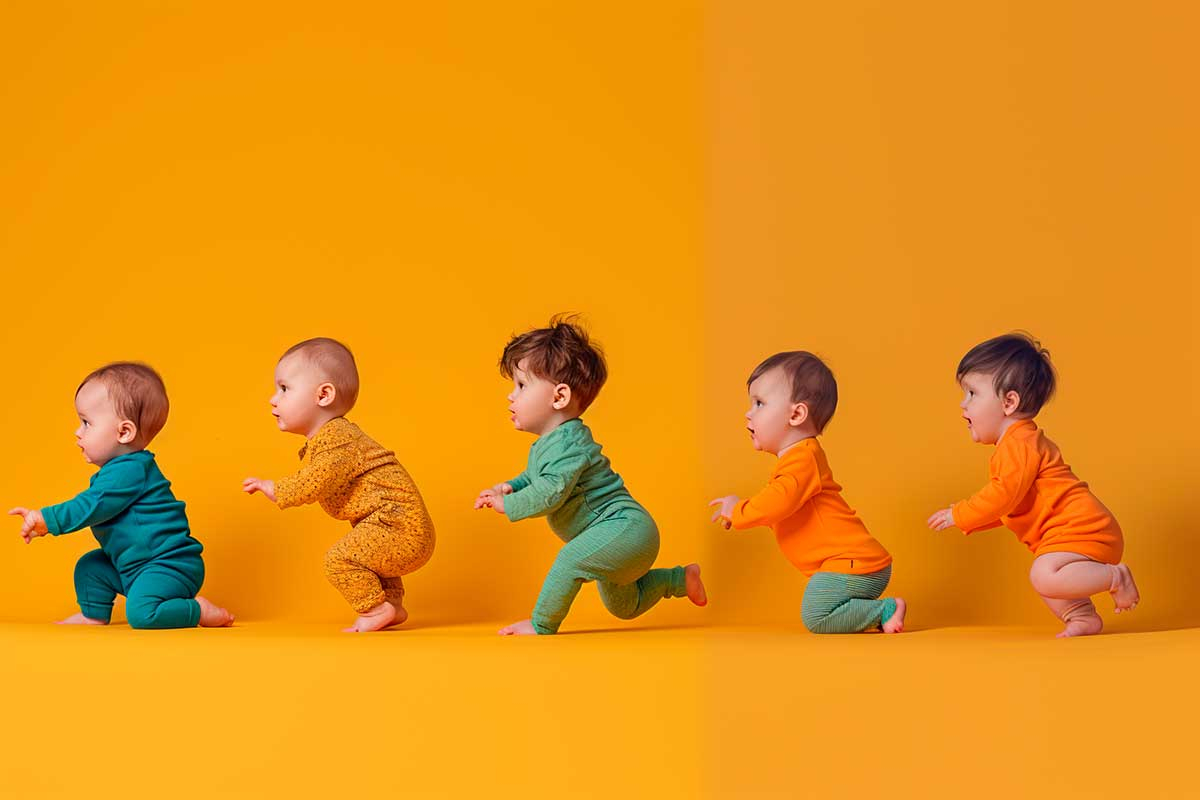Child Development: Key Milestones from 0 to 5 Years
Child development is a fascinating and crucial period in a child's life. From birth to five years, children undergo numerous transformations in terms of motor skills, cognition, emotions, and social abilities. Understanding these milestones and knowing how to stimulate your child's development is essential. In this article, we will explain the main milestones of child development, what to expect at each stage, and how to effectively stimulate development. Clinic Consultation is here to provide valuable information about this essential process.
0 to 6 Months: The First Milestones
Motor Development
In the first six months, babies begin to develop motor control. Initially, they have natural reflexes such as sucking and grasping. Over time, they start to lift their heads, roll over, and eventually try to sit up with support.
Cognitive Development
Cognitively, babies start to recognize familiar faces and explore the world around them. They track objects with their eyes and begin to understand object permanence, realizing that things continue to exist even when out of sight.
How to Stimulate
- Tummy Time: Place the baby on their tummy to strengthen neck and back muscles.
- Visual and Auditory Interaction: Use colorful toys and make sounds to encourage hand-eye coordination and auditory attention.
6 to 12 Months: Exploring the World
Motor Development
From 6 to 12 months, babies develop more complex motor skills. They begin to crawl, sit without support, and, in many cases, stand with assistance. Some babies may even take their first steps before their first birthday.
Cognitive Development
During this stage, babies start to understand cause and effect, such as pressing a button to hear a sound. They also begin to imitate sounds and gestures and might say simple words like "mama" or "dada."
How to Stimulate
- Stacking and Sorting Toys: Offer toys that encourage fine motor skills.
- Reading and Conversation: Read baby books and talk to your baby to stimulate language development.
1 to 2 Years: First Steps and Words
Motor Development
Between 1 and 2 years, children become more mobile. They start walking independently, running, and climbing stairs with assistance. Fine motor skills also improve, allowing them to pick up small objects and start using utensils to eat.
Cognitive Development
Cognitively, children begin to identify and name familiar objects. They develop a basic understanding of concepts like "in" and "out" and start solving simple problems, such as finding a hidden toy.
How to Stimulate
- Building Blocks: Provide building blocks to stimulate coordination and creativity.
- Imitation Games: Engage in pretend play to promote social and emotional skills.
2 to 3 Years: Autonomy and Exploration
Motor Development
Between 2 and 3 years, children gain more confidence in their motor skills. They can run faster, jump, and start pedaling tricycles. Fine motor skills continue to improve, allowing them to draw lines and circles.
Cognitive Development
During this phase, children's language skills develop rapidly. They start forming two- and three-word sentences and following simple instructions. Symbolic play becomes more complex, and they can pretend to be different characters.
How to Stimulate
- Art Activities: Offer crayons and paper to encourage artistic expression.
- Stories and Tales: Tell stories and encourage the child to participate by asking questions about the narrative.
3 to 4 Years: Imagining and Creating
Motor Development
Between 3 and 4 years, children refine their motor skills. They can ride tricycles, catch balls, and hop on one foot. Fine motor skills allow them to start dressing themselves and using safety scissors.
Cognitive Development
Cognitively, children at this age have active imaginations. They enjoy pretend play and start to understand concepts of time, such as "today," "tomorrow," and "yesterday." Language continues to develop with a richer vocabulary and more complex sentence structures.
How to Stimulate
- Pretend Play: Encourage imaginative games, like playing house or school.
- Puzzles and Memory Games: Provide puzzles and games that challenge memory and problem-solving skills.
4 to 5 Years: Preparing for School
Motor Development
From 4 to 5 years, children develop more refined motor skills. They can run, jump, and even start basic sports. Fine motor skills enable them to begin writing letters and numbers.
Cognitive Development
Cognitively, children in this age group start to grasp basic mathematical concepts such as counting and shape recognition. They develop more advanced social skills, learning to share and cooperate with others.
How to Stimulate
- Pre-School Activities: Introduce activities involving letters and numbers to prepare the child for school.
- Group Games: Encourage group play to develop social and cooperative skills.
Conclusion
Understanding child development milestones and knowing how to stimulate each stage is crucial for healthy growth. From the first months to five years, each stage presents unique challenges and opportunities for learning and development. Clinic Consultation is here to provide the best tips and guidance to support your child's development. For more information, visit the Clinic Consultation.
